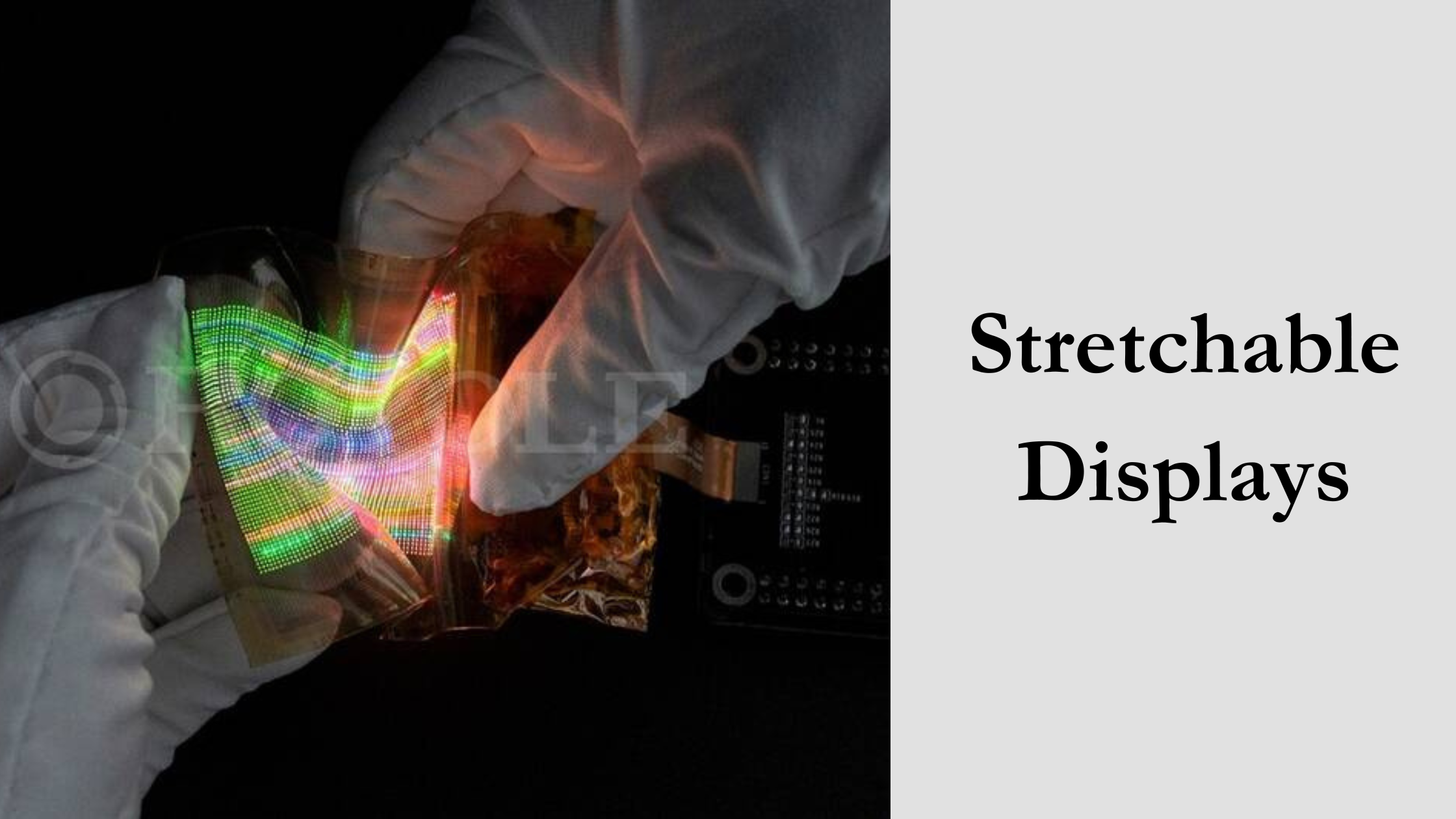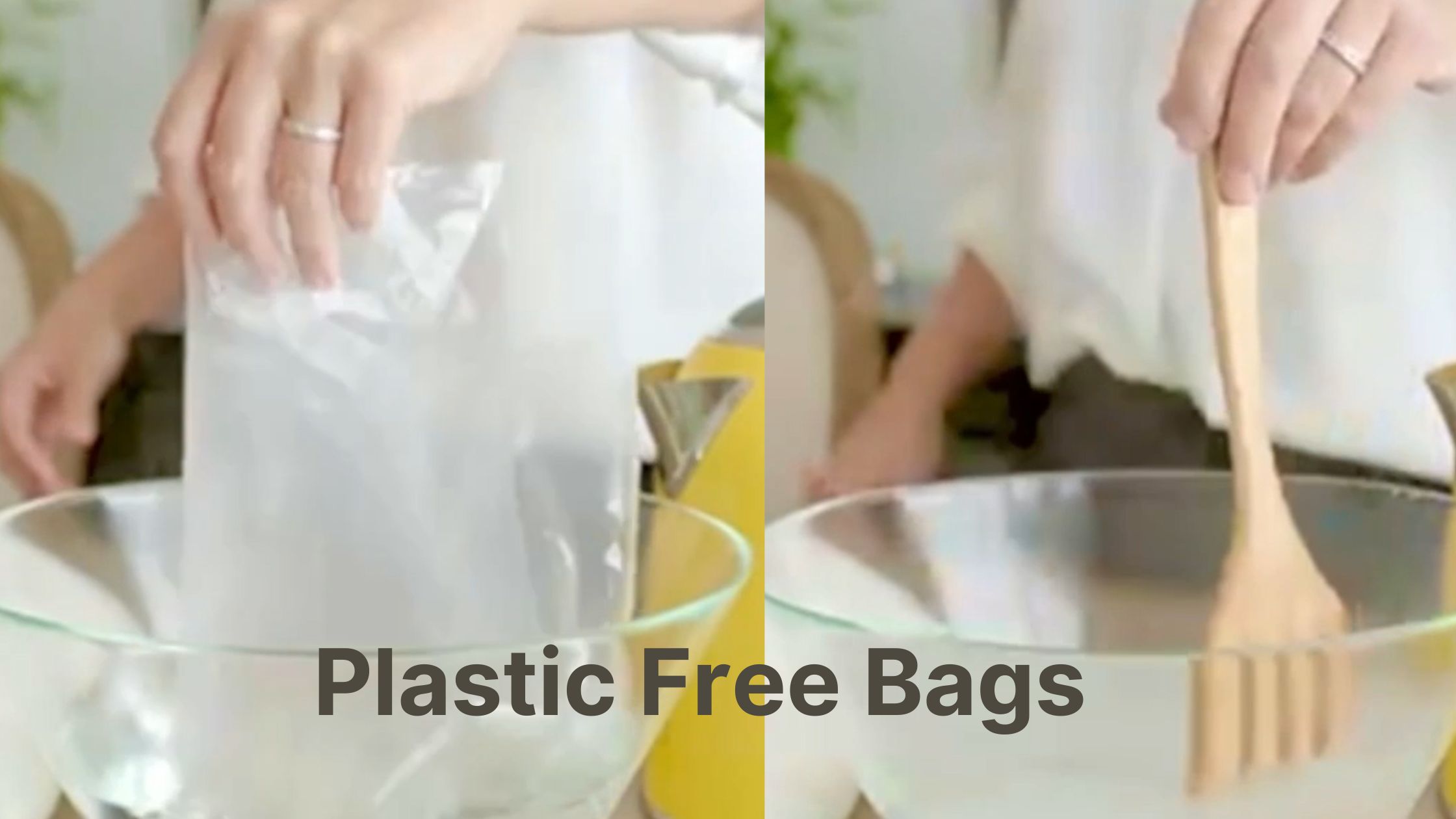We’ve grown accustomed to seeing curved display panels, novel form factors, and a range of flexible displays that can fold or roll, like folding mobile phones and laptops, in the previous couple of years. Future developments will provide even more flexibility to displays—they will be able to expand into various forms.
Royole launched the world’s first flexible microLED display last year. According to the manufacturer, it has a 130% stretchability, a 40° convex bending capability, a 120 PPI resolution, and a 70% transmittance. In addition to folding and rolling, the display can also be shaped in three dimensions freely, including pulling, twisting, convex, and concave deformations.
The idea of a display that can be stretched in all directions like a rubber band has lately been floated by Samsung. Although stretchable displays are currently mostly in the prototype stage, there have been some significant advancements in this field that may soon lead to their commercialization.
Several Methods For Creating A Display Stretch
Research on stretchable displays has been conducted using a variety of methodologies, such as:
In February, a research team from the Korea Institute of Machinery and Materials (KIMM) reported that they had successfully developed a 3-inch microLED display that can stretch up to 25% without causing any visual distortion. based on metamaterials, or artificial materials with special mechanical characteristics not seen in the natural world.
We’ve grown accustomed to seeing curved display panels, novel form factors, and a range of flexible displays that can fold or roll, like folding mobile phones and laptops, in the previous couple of years. Future developments will provide even more flexibility to displays—they will be able to expand into various forms.
Royole launched the world’s first flexible microLED display last year. According to the manufacturer, it has a 130% stretchability, a 40° convex bending capability, a 120 PPI resolution, and a 70% transmittance. In addition to folding and rolling, the display can also be shaped in three dimensions freely, including pulling, twisting, convex, and concave deformations.
As for the Stanford University study team, they recently reported that they had developed “a method to produce a high-brightness elastic light-emitting polymer, which functions like a filament in a lightbulb.” Stretchy polymers, or synthetic plastic materials, are the only materials used in the group’s final exhibit. The gadget can be extended up to twice its original length without ripping, and its maximum brightness is at least double that of a cellphone.1.
The Stanford team’s difficulty is that although flexible materials like rubber have poor light transmission, stiff and brittle materials with high light-emitting capabilities typically do. The discovery was made by researcher Zhitao Zhang when he found that combining a form of stretchable plastic called polyurethane with Super-Yellow, a yellow-colored light-emitting polymer, made it soft and malleable. Not only did it still have the capacity to generate light, but the light it released was brighter.
Just a handful of the several stretchable-display development projects that are presently under progress include the following:
Reflective display technology is another method being considered for the creation of stretchy displays. In contrast to emissive (like OLED) and transmissive (like LCD) displays, reflecting displays run entirely off of electricity. They keep their color constancy even when stretched, and they are quite legible in natural lighting.2.
A research team at Korea’s Gwangju Institute of Science and Technology (GIST) is pursuing an alternative growth route. They used stretchy interconnects to create a double-layer modular architecture to join individual miniLEDs. Using this technique, an inorganic LED display with stretch capabilities and a high fill factor is produced.3.
Canatu, a Finnish startup that makes materials using carbon nanotubes (CNTs), is taking yet another tack. For instance, they claim to have the strongest and thinnest free-standing carbon nanotube membrane in the world. With its high transmittance, high contrast, heat resistance, and touch sensitivity, it may be used for a broad range of display and other applications.
Flexible Displays: An Extra Layer Of Skin
Imagine carrying about a tiny display device that, when needed, you could extend into a giant screen and adhere to any flat, curved, or uneven surface.4. Or a foldable smartphone screen that you could tuck into your pocket. Even while it might be entertaining to envision future uses for stretchy technology, many of the most interesting use cases are related to health and life-saving.
For a long time, for instance, scientists have dreamed of wearable display patches that, like a second layer of skin, would flex and stretch organically when a patient moves. Real-time patient monitoring patches that combine screens and sensors are currently being developed.
For instance, in order to create the “stretchable electronic skin” form factor, the Samsung Advanced Institute of Technology (SAIT) was able to “integrate a stretchable organic LED (OLED) display and a photoplethysmography (PPG) sensor in a single device to measure and display the user’s heart rate in real-time.”5. This method has the advantage of being based on currently used semiconductor fabrication techniques, which makes the commercialization of stretchable displays all but certain.
You won’t be watching video material on any of the several stretchable displays that are now being developed; they only provide basic, low-resolution picture capabilities. However, as long as industrial and scientific research teams keep moving forward, we will eventually witness these and other technological marvels that were previously exclusively the stuff of futurists and science fiction authors.



